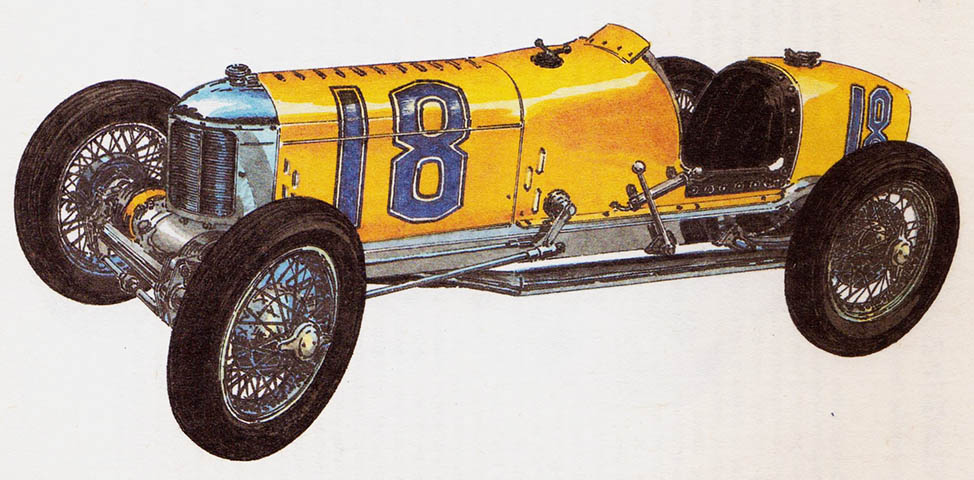MILLER 1,5 L – year 1927
Harry Miller, The Angels, California, USA.
Harry Armenius Miller founded the village of 1915 year in Los Angeles company, initially specializing in the production of carburettors, later eight-cylinder engines according to Peugeot, and at the beginning of the twenties in the assembly of entire cars. They were characterized by the precise workmanship of all elements and "round" ones” prices. The price of one copy was 10 000 dollars, and the front-wheel drive version - 15 000 dollars.

Harry Miller, The Angels, California, USA.
In year 1927 a pair of riders at the European Grand Prix in Monza – Pete Kreis and Cooper finished third in one of the two Millers starting. Eight-cylinder in-line engine with a displacement 1478 cm3 consisted of two four-cylinder blocks with a cylinder diameter 55,5 mm and piston stroke 76,2 mm. The crankshaft, mounted in five bearings, was equipped with a dry crankcase and, with the help of gears, drove two camshafts located above the cylinder heads. There were four valves in the head of each cylinder. From the rear end of the crankshaft, it was driven by a gear with a gear ratio 5 : 1 centrifugal compressor, which, under positive pressure, pumped the mixture into four double Miller carburettors. The engine was making power 133,3 kW (154 KM) by 8000 RPM. After tuning the engine and using an alcohol mixture as fuel, power was achieved 185,3 kW (252 KM) at the same speed. Precision workmanship of all parts, especially a compressor, aiming at maximum power 40 000 RPM, it was absolutely necessary. The biggest curiosity of this car was the de Dion rigid front drive solution, absolutely unique in the history of Grand Prix cars. The power was transferred to the bridge via a multi-plate wet clutch and a three-speed gearbox. The steel frame was hung on the longitudinal ones, on the back of the semi-elliptical, in front of double quarter elliptical springs with friction shock absorbers. Hydraulic brakes acting on all wheels were dimensionally smaller in relation to European conditions, because the car used to compete mostly on the Indianapolis circuit, where the brakes were only used after the finish line. The single-seater body made of aluminum sheet reduced the weight of the vehicle to 635 kg. Thanks to the use of Firestone Speedway tires, the car reached its maximum speed 252 km/h.
The Miller company in 1932 of the year was bought by Fred Offenhauser, whose engines, popularly known as "Offs”, they later won an almost monopoly in the race 500 Indianapolis mile.